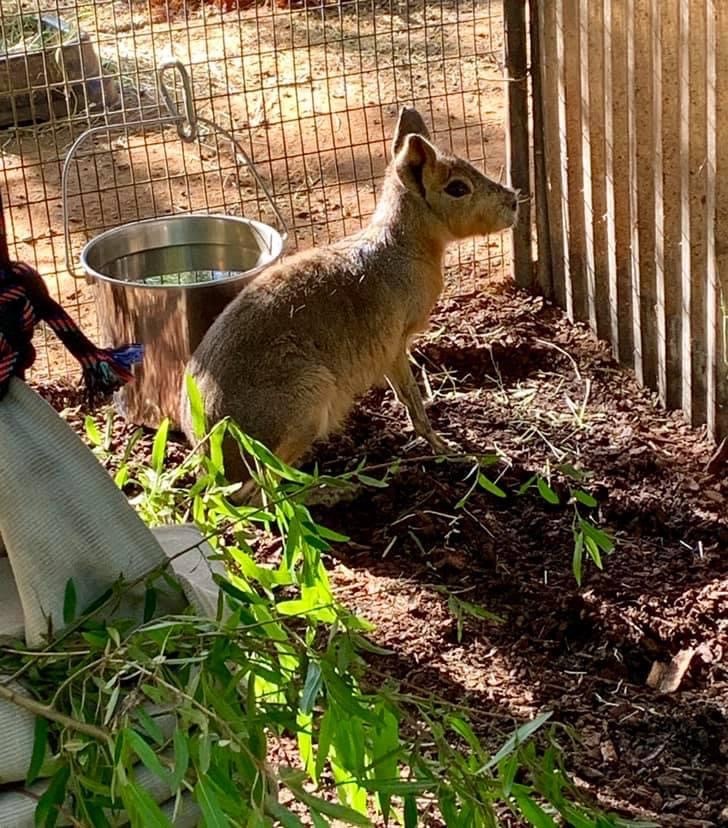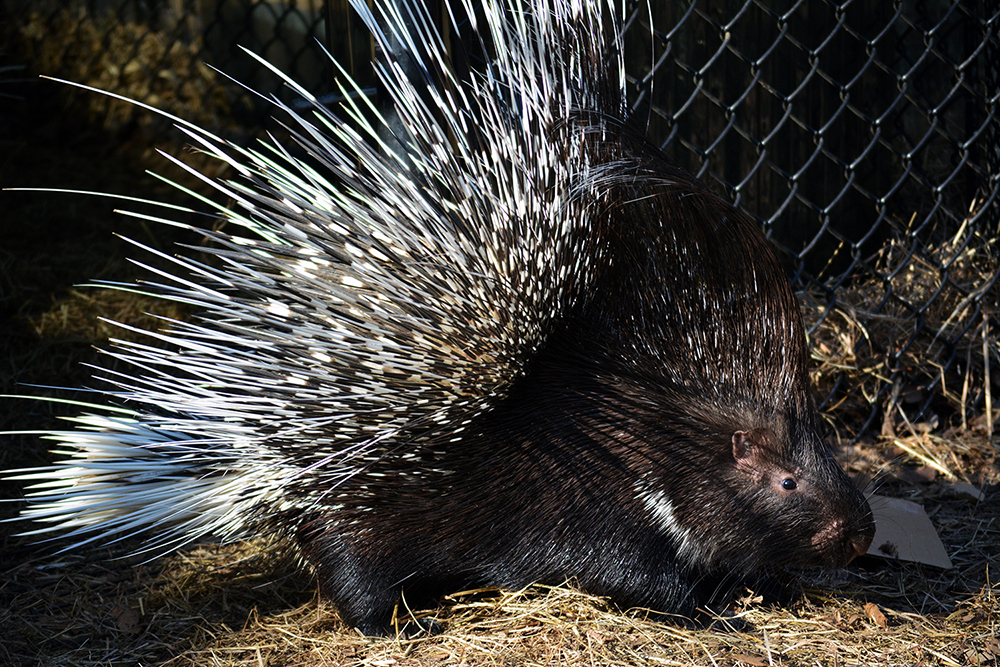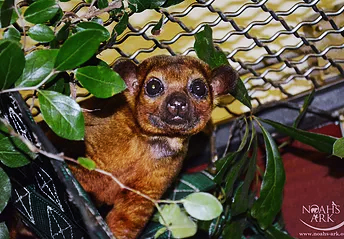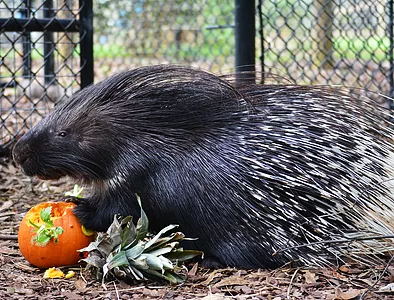Patagonian Cavy or Patagonian mara (Dolichotis patagonum) is a large member of the rodent family from Argentine. It can reach a length of over 30 inches and weigh over 30 pounds. These long legged animals are mainly brown or gray in color and have long claws that they use for digging. Because of their long legs, they can reach speeds of over 30 miles per hour when running. Found mainly in the grasslands of Patagonia, they rely on their speed to escape predators. Patagonian Cavies feed on grasses and other vegetation.
Preferring to nest in burrows, the Patagonian Cavy is a semi-colonial creature that lives in groups of up to 30 pairs. Males and Females bond for life and will often breed up to 3 times per year. Young Cavies are born with their eyes open and are able to walk within minutes of birth. The female will typically nurse the young for up to 3 months. During this time, the parents will become territorial and drive other Cavies away. These unique creatures have several methods of locomotion that include walking, hopping, galloping and even bouncing on all four feet. In the wild they eat mainly grasses, leaves, fruits and they both have their favorites.
Kinkajous are small (roughly 5-10lbs) mammals native to parts of Mexico and Central and South America where they live in tropical forests. They have a conservation status of “least concerned” but deforestation is becoming a growing threat to the future of this species. Although kinkajous are cute and usually docile animals, they are strictly nocturnal, which makes them a difficult animal to have as a pet. They have sharp teeth and claws, consume a specialized diet, and can carry roundworm, which can be transferred to the uneducated owner causing extreme illness. Still, kinkajous continue to be one of the most popular exotic pets in the United States and more and more sanctuaries are trying to find room to house them after they didn’t live up to their owner’s expectations of being a good “pet”.
The Crested porcupine (Hystrix cristata), also known as the African Crested Porcupine, are the largest species of porcupines and considered the largest rodent. They are nocturnal and mostly active at night but will forage during the day. Porcupines need many opportunities to help wear down their teeth, because their teeth grow like beavers and rats. Our keepers provide them with antlers, sticks, logs, and branches to chew on. Their sharp, sturdy quills give highly effective protection against their predators. The quills are anywhere from 1 to 13 inches long and vary with thickness. When a predator approaches porcupines they raise the longer quills to make them look larger and more threatening. They do not shoot their quills out. Porcupines are Herbivores and their diets consist of tubers, bark, bulbs, fruits, roots, insects and small vertebrates.





